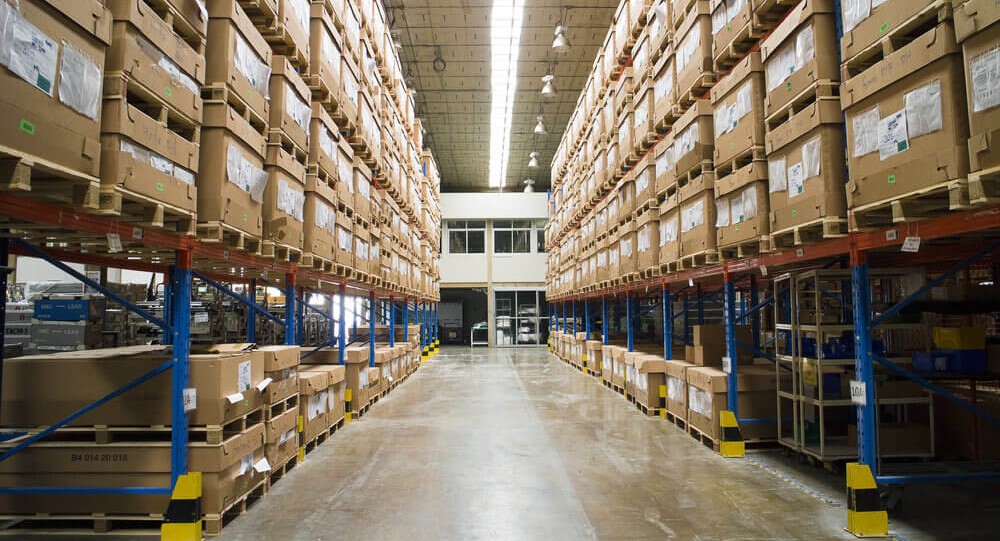Make-to-Stock Manufacturing Workflow and Best Practices
Make-to-stock (MTS) is a manufacturing workflow that uses the push system. This means that goods are produced to stock by “pushing” them through the supply chain according to anticipated demand. In this post, we will look at the pros and cons as well as best practices for utilizing MTS.
You can also listen to this article:
What is make to stock (MTS)?
Make-to-stock, or MTS, is a manufacturing strategy in which goods are produced into finished goods inventory according to anticipated consumer demand. MTS is referred to as a push-type manufacturing system because it is set up to “push” production through the supply chain according to demand forecasts. This contrasts with pull-systems like make-to-order, assemble-to-order, and engineer-to-order, wherein production is “pulled” through the supply chain according to incoming customer orders. MTS is usually utilized by companies that produce goods in bulk, often creating many identical goods in one production cycle.
For manufacturing companies, a balance between sales and inventory is very important as both over- and understocking can lead to economic difficulties. Overstocking increases inventory and storage expenses and can bring about spoilage, obsolescence of inventory items, and raised utility fees. Understocking, on the other hand, can lead to opportunity loss, introduce stoppages and considerably raise the cost of production. Balancing out the production capacity and actual demand is therefore of paramount importance for MTS setups.
This balance is achieved through in-depth demand forecasting as well as setting up manufacturing in a way that can handle rapid adjustments in production capacity. Demand needs to be forecasted as precisely as possible, using historical turnover data and thorough sales analyses. MTS operations need to employ far more advanced inventory and production management techniques than simple push-type setups where goods are produced to stock according to pre-set production capacities that the sales team then attempt to turn over. Modern manufacturing ERP solutions can play a big role in automating and streamlining MTS production management.
Read more about Make-to-Order and Assemble-to-Order Manufacturing Processes.
Advantages and disadvantages of make to stock
A properly implemented MTS system can bring considerable advantages to the manufacturing operation. The main ones include:
- Efficient scheduling. Because production capacities are planned in advance, the shop floor knows when and how much to produce and procurements can be planned ahead more accurately. This increases resource and workload utilization and also provides more control over the inventory and supply chain.
- Manufacturing in scale and scope. Since MTS setups produce goods in volume, fixed production costs can be divvied up between a large number of produced units. This lowers the average cost of production per unit, allowing companies to take advantage of economies of scale. Similarly, if an MTS operation produces many similar SKUs of different products, the production cost per item is lowered due to economies of scope.
- Increased flexibility. Producing in bulk, MTS setups usually have a larger Work in Process (WIP) footprint than pull-type operations. WIP inventory can be used to supply intermediate sub-processes for smoother product flow throughout the system. This allows longer production runs of similar SKUs to maximize equipment uptime, reduce changeover time and allow for better labor utilization and Overall Equipment Effectiveness. MTS operations also often utilize buffers like safety stock to provide flexibility for quickly shifting production capacity.
- Quicker delivery times. Whereaspull-type modes are mostly used for producing customizable products with longer lead and delivery times, MTS setups produce goods to stock. This means that products are available in the shop as soon as the sales period begins. Customers can choose a product and have it sent to delivery at the same time.
While useful in controlling costs and protecting against opportunity loss in bulk goods production, MTS also does have some disadvantages. The main ones include:
- Forecasts Must Be Accurate. An MTS system relies on accurate forecasting to prevent stockouts or overstocking. Inaccurate historical data or sales analysis can lead to long-term shocks within the system. Cyclical or seasonal sales cycles can have a large impact on the accuracy of these forecasts.
- Cash Flow Concerns. Small to medium manufacturers often experience critical cash flow issues based on raw materials held in inventory or tied up in WIP, or finished goods awaiting purchase or shipment in the warehouse. In these cases, even small variations to the MTS system can tie up operational funds and introduce production difficulties.
- Inventory Must Be Accurate. Inventory in MTS environments consists of three main types: raw materials, WIP, and finished goods. These subsets must not only be accurate at each phase of production, order tracking and handoff from one phase to the next must be accurate as well. Inefficient inventory counts or valuations at any phase can impact cost and production as well as tax liability because inventory is taxed differently at each phase depending on legislation.
- Risk of Obsolescence or Perishability. Because many MTS products are rapidly consumed, a miscalculation of the forecast can render perishable goods unusable or require cost reduction to ensure sales. Likewise, in industries such as electronics, overstocking due to inaccurate forecasts may see the remaining stock rendered obsolete as new technology replaces outdated components.
Learn more about Work-in-Process Inventory Accounting.
Best practices for make to stock production
Each of the above-mentioned drawbacks has a common element – they all require accurate planning, forecasting, purchasing, analysis, and decision-making. All these processes also have a high degree of human interaction required to make an MTS system work. The heavy reliance on historical data and forward-looking analysis often obscures paths to improved efficiency as team members seek to make sense of data, establish safety stock levels, negotiate contracts with vendors, and plan production. Additionally, SMEs may often utilize a hybrid production mode with some products being made to stock while others made to order. This intensifies the problems caused by tracking different data-sets for different segments of the business.
- Develop an Accurate Inventory Management System. No amount of forecasting can overcome a poorly optimized inventory system. Inbound inventory should be tracked and automatically scheduled into manufacturing orders from the point of purchase. It should also be accurately located for quick use in production. Similarly, as items change status from raw materials to WIP, accurate tracking is a must as value-added steps like labor and routing are added at sub-processing stages. Finally, finished goods should be quickly located and correctly accounted for when complete. Latency within an inventory system is often the result of the human component, manual design, or both. This can be overcome with inventory management software systems capable of providing seamless traceability as goods move through manufacturing.
- Manage Long and Short Supply Chain Legs in Materials Management. Most MTS systems buy a significant amount of their raw materials in bulk. However, there are other materials and components that may be purchased locally or regionally that do not require bulk purchasing to lock in lower cost. In addition to different lot size, lead times can vary sharply depending on the size of the lot and distance travelled. This can create long and short legs within the supply chain that must be diligently managed. Here again, a robust software system with integrated purchasing, lead time monitoring, and costing can reduce human error and missed opportunities in balancing long and short supply chain legs. These systems can usually integrate with inventory management systems to provide the manufacturer with Just-In-Time (JIT) capabilities not possible with spreadsheet-based decision-making.
- Develop a Workflow-Based Production System. Many SMEs begin as small operations with a handful of employees and a few products. As a result, they often utilize spreadsheet-based production management or a mix of legacy systems that may turn out difficult to scale or integrate with. This can create inefficiencies that affect OEE, labor utilization, and other production variables. Transferring these variables to a workflow-based production system that ties in with purchasing, supply chain, and inventory management can provide decision-makers with visibility over the production floor down to the transactional level. Most modern manufacturing software can integrate Bill of Materials, routings, workstation capacity planning, backward scheduling, and other feature-rich functions that allow the shop floor to be optimized whilst being tied into other departments.
As manufacturing becomes more complex, human decision-making, legacy systems, and spreadsheet-based planning become more difficult to maintain, adding a costly and inefficient burden to the competitive effort of companies. These best practices can be best achieved through the adoption of an agile, feature-rich, intuitive, and modular ERP/MRP system. By adopting competent MRP software, small to medium manufacturers can find themselves on par with larger companies in the control and use of their data to run their MTS production more optimally.
Key takeaways
- Make-to-stock is a manufacturing strategy in which goods are produced into finished goods inventory according to anticipated consumer demand.
- Most companies utilizing MTS are bulk producers that manufacture larger volumes of similar products per production period.
- Balancing out production capacities and actual demand is of paramount importance for MTS setups, as under- or overstocking can seriously impede business.
- MTS manufacturing modes rely on thorough and accurate demand forecasting to achieve competitiveness.
- Effectively setting up MTS production mostly relies on capable manufacturing software as thorough insight and control over the inventory and supply chain are a must.
You may also like Engineer-to-Order (ETO) Manufacturing Process Flow and Best Practices.





